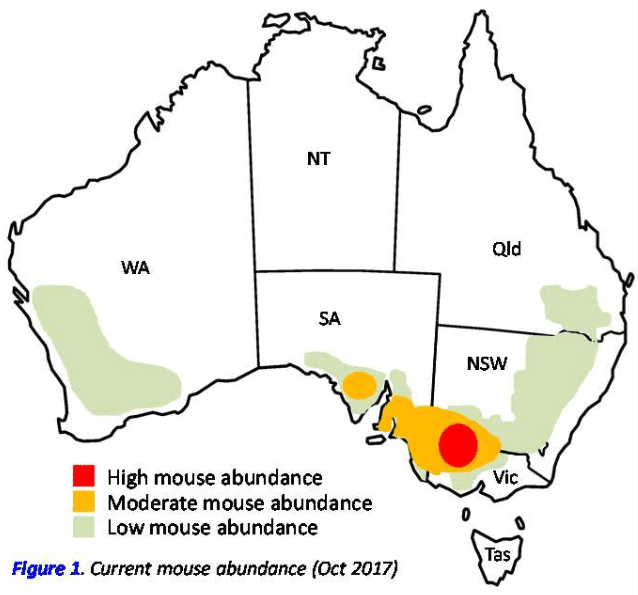A MODERATE likelihood exists of a mouse population outbreak in North Western Victoria in autumn 2018, according to the CSIRO’s latest modeling predictions update, released on the weekend.
The forecast comes with a rider that modelling predictions hinge on the outcome of October-December 2017 rainfall.
Low Oct-Dec rainfall would point to mouse abundance in the region of 80 mice/ha, with an outbreak probability of 0.12, while high Oct-Dec rainfall would indicate a mouse abundance of 140 mice/ha, with an outbreak probability of 0.39.
The CSIRO’s latest mouse forecast also indicates that the Central Darling Downs is another area that could see the mouse population increase to moderate levels by May 2018.
The density index for the mouse population in the Central Downs is currently very low (<1%), but is likely to increase to moderate levels next year.
The probabilities for May 2018 are High (0.09), Moderate (0.60), Low (0.28) and Very Low (0.02). The CSIRO says the Darling Downs model has achieved a 78 percent success rate from these long-term predictions over the period of 1989 to 2003.
The report is an update on surveillance of mice across the grainbelt of Australia for September/October 2017.
Mouse populations were monitored in typical grain farming systems in WA, SA, Vic, NSW and Qld during early spring 2017 (September/October).
The monitoring provides data on the size (abundance) of mouse populations, their breeding status and overall activity. This information is used in models that have been developed progressively over the last 20-30 years to predict mouse outbreaks.
Current situation
The current situation shows high populations of mice for this time of year in the Mallee and Wimmera regions of Victoria, with mice causing some damage to growing crops, however baiting appears to be effective.
Moderate populations of mice are showing up in the Yorke and Eyre Peninsulas and South Australian Mallee and Southern NSW.
However mouse abundance currently remains low in all other regions.
CSIRO researchers are urging growers to actively monitor mouse activity and look for signs of mouse damage (chewed tillers; nodes and pods in canola and pulses) and continue to use MouseAlert (www.mousealert.org.au) so other growers can see what mouse activity is being observed in their neighbourhood.
Where a mouse population is high, growers can consider application of bait now (being aware of the two week withholding period).




HAVE YOUR SAY